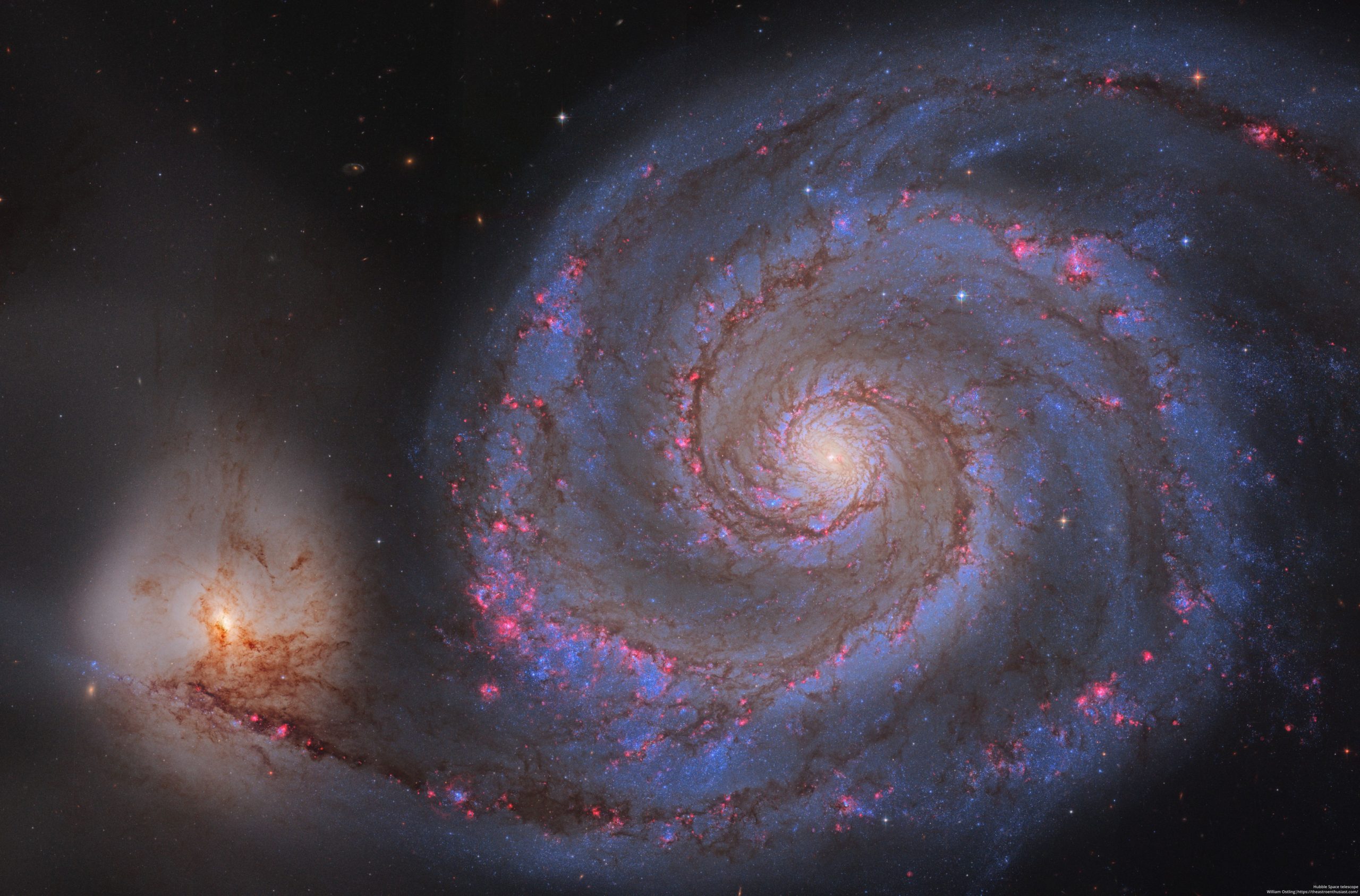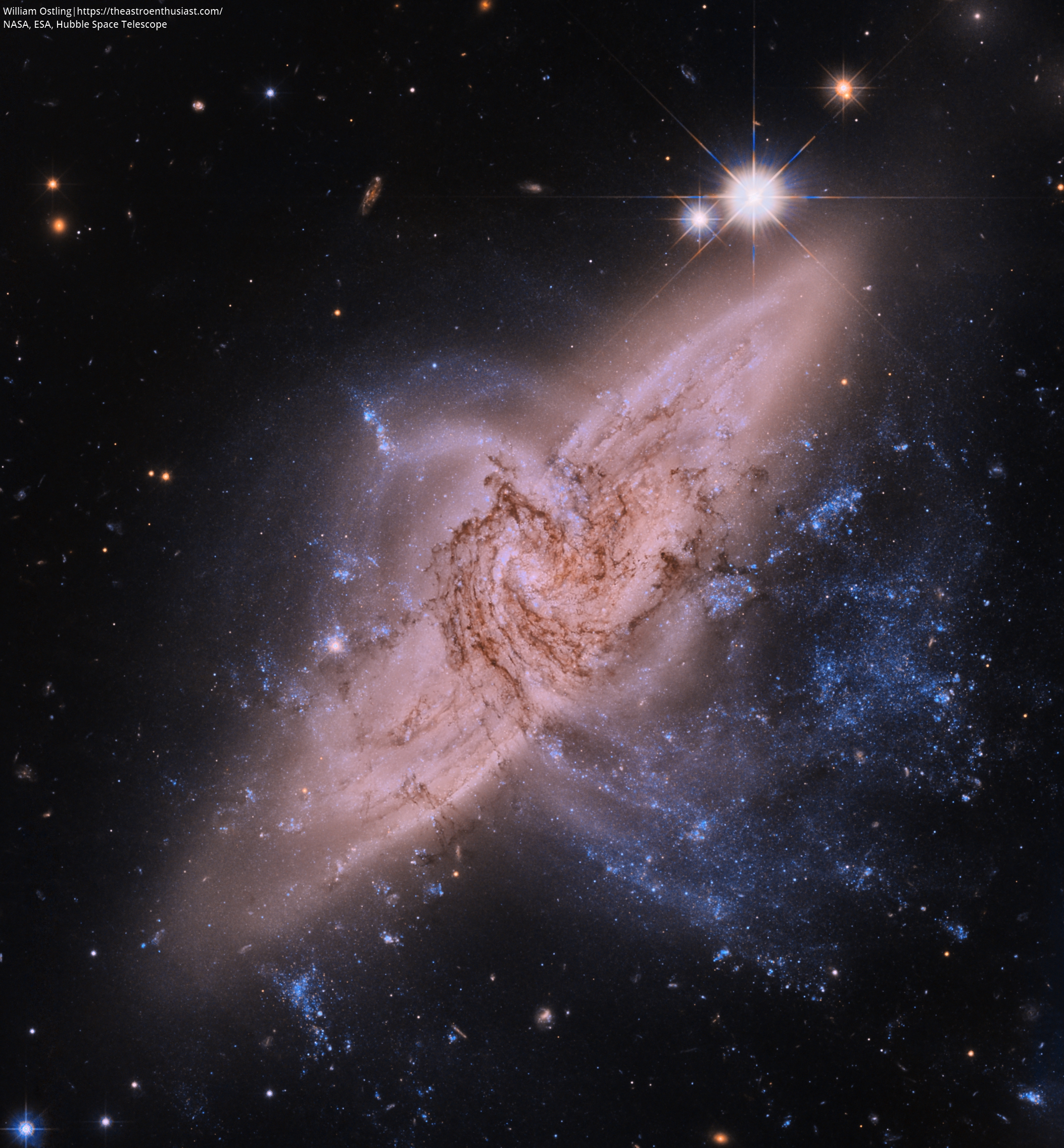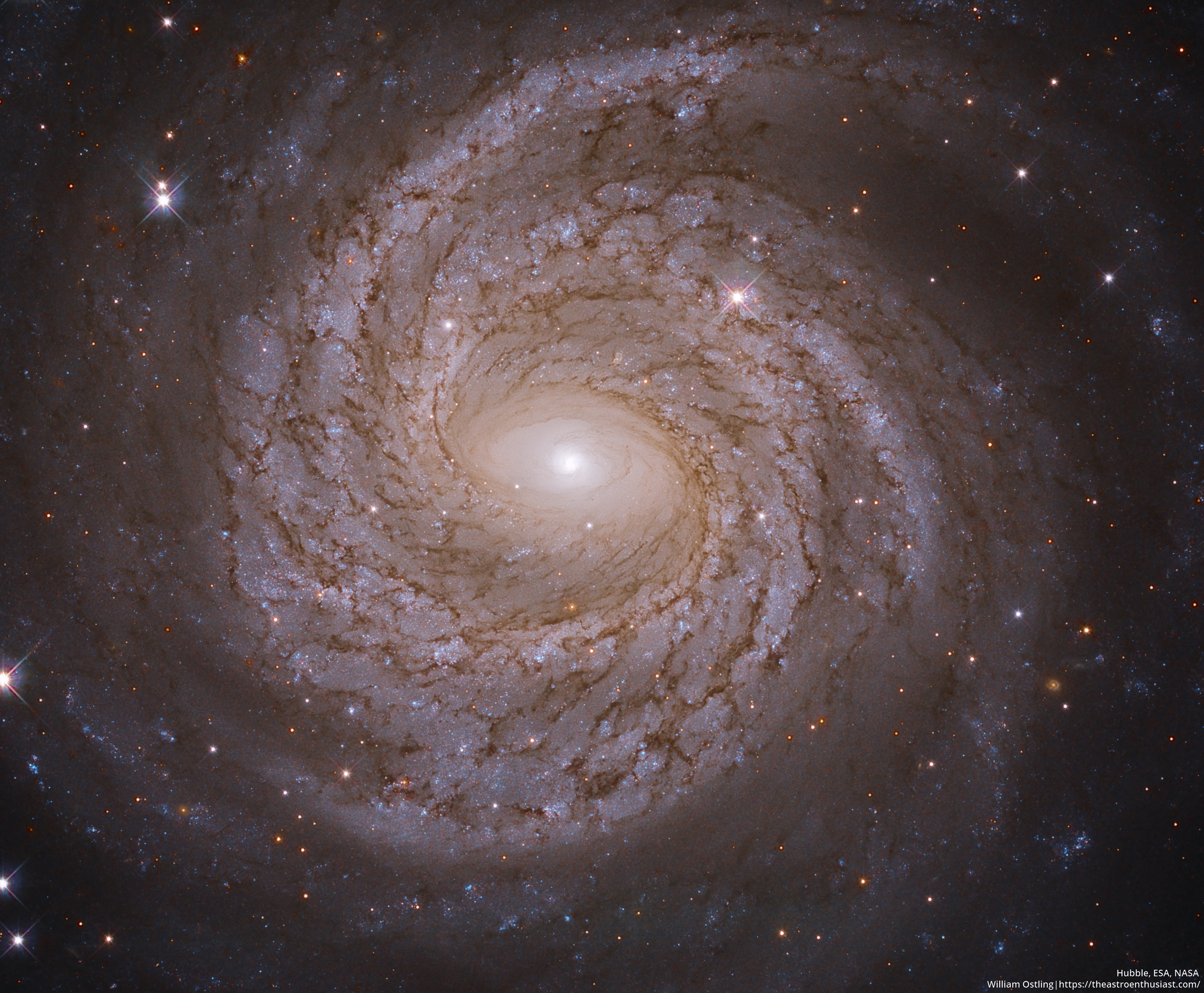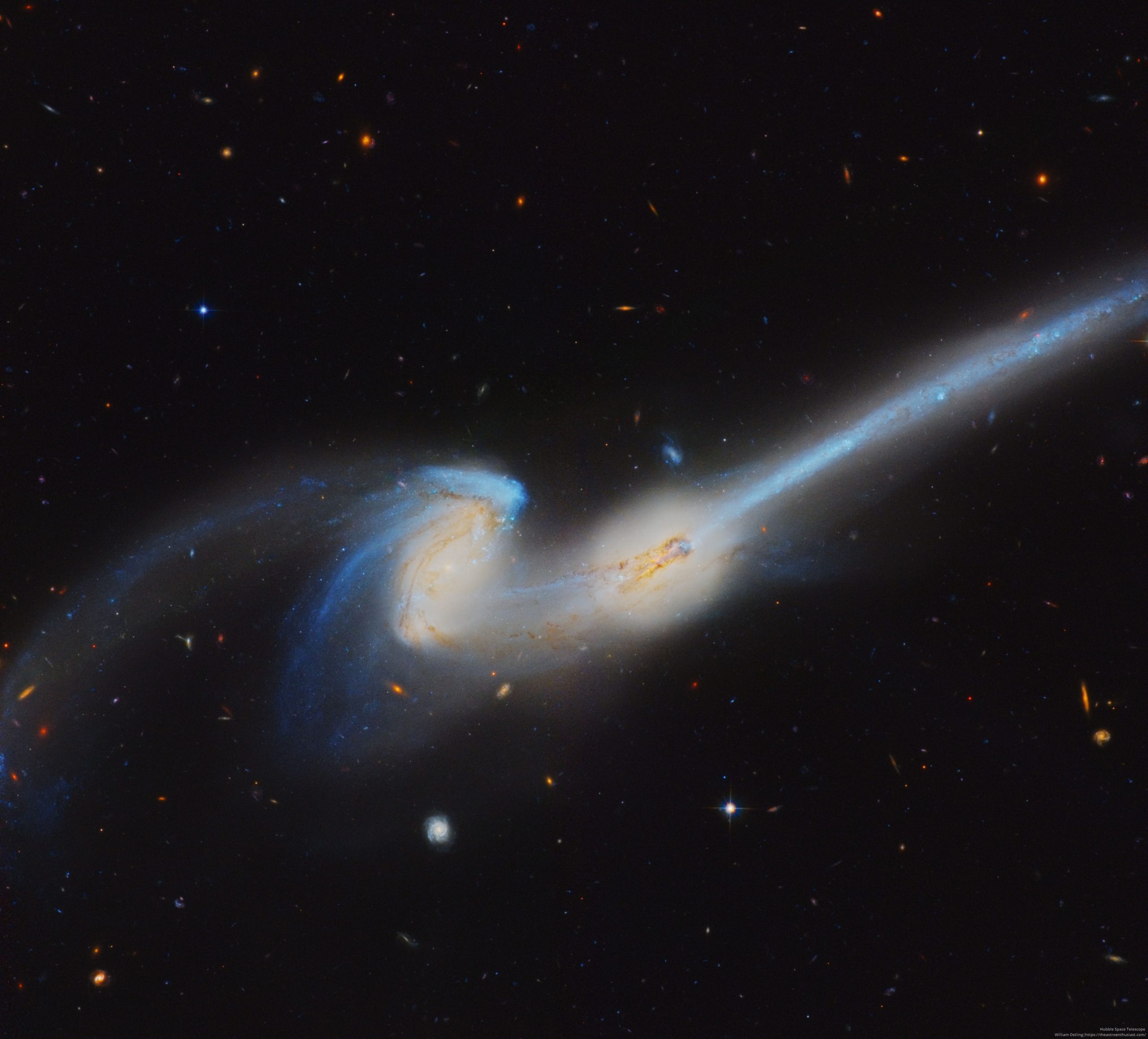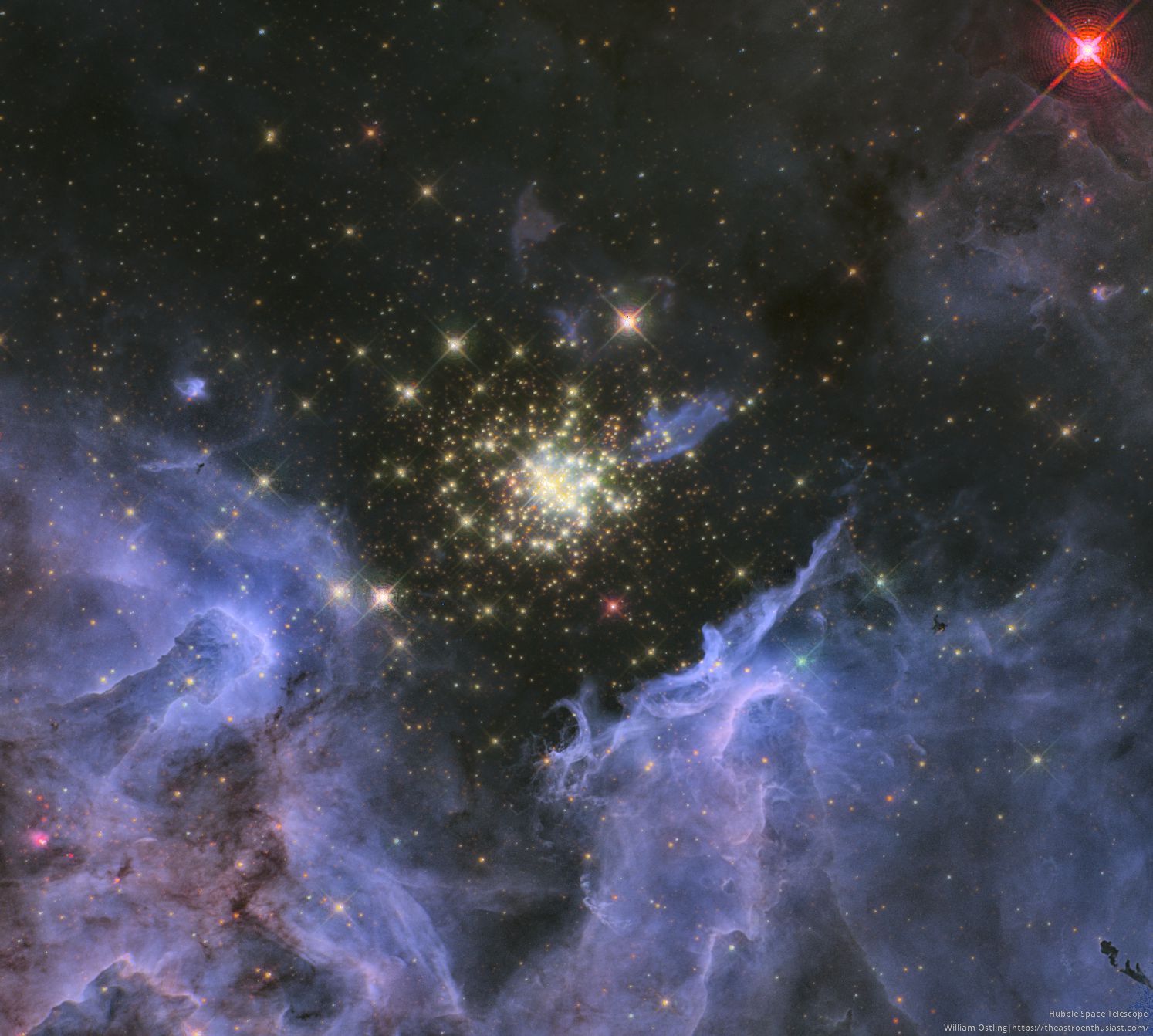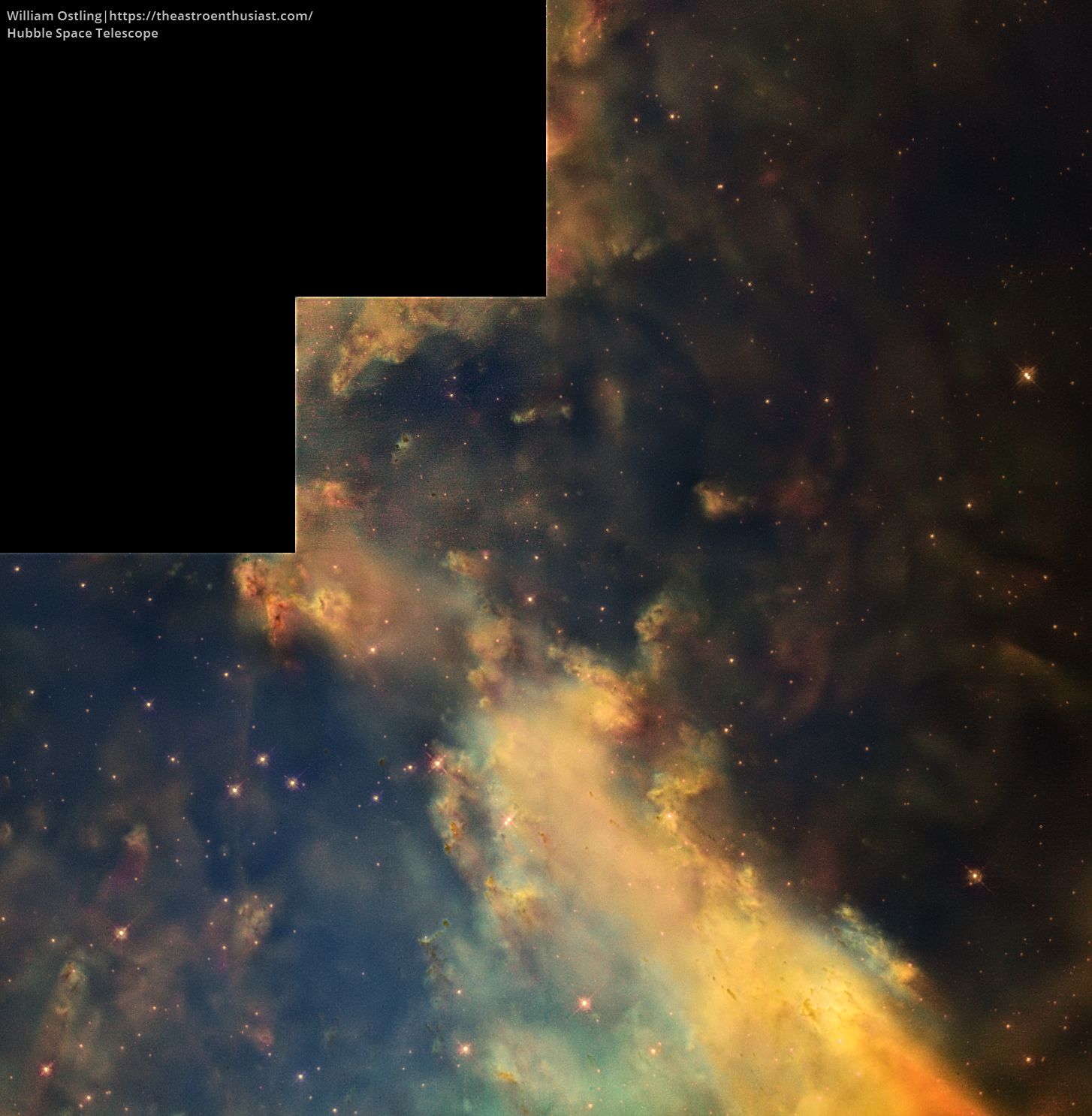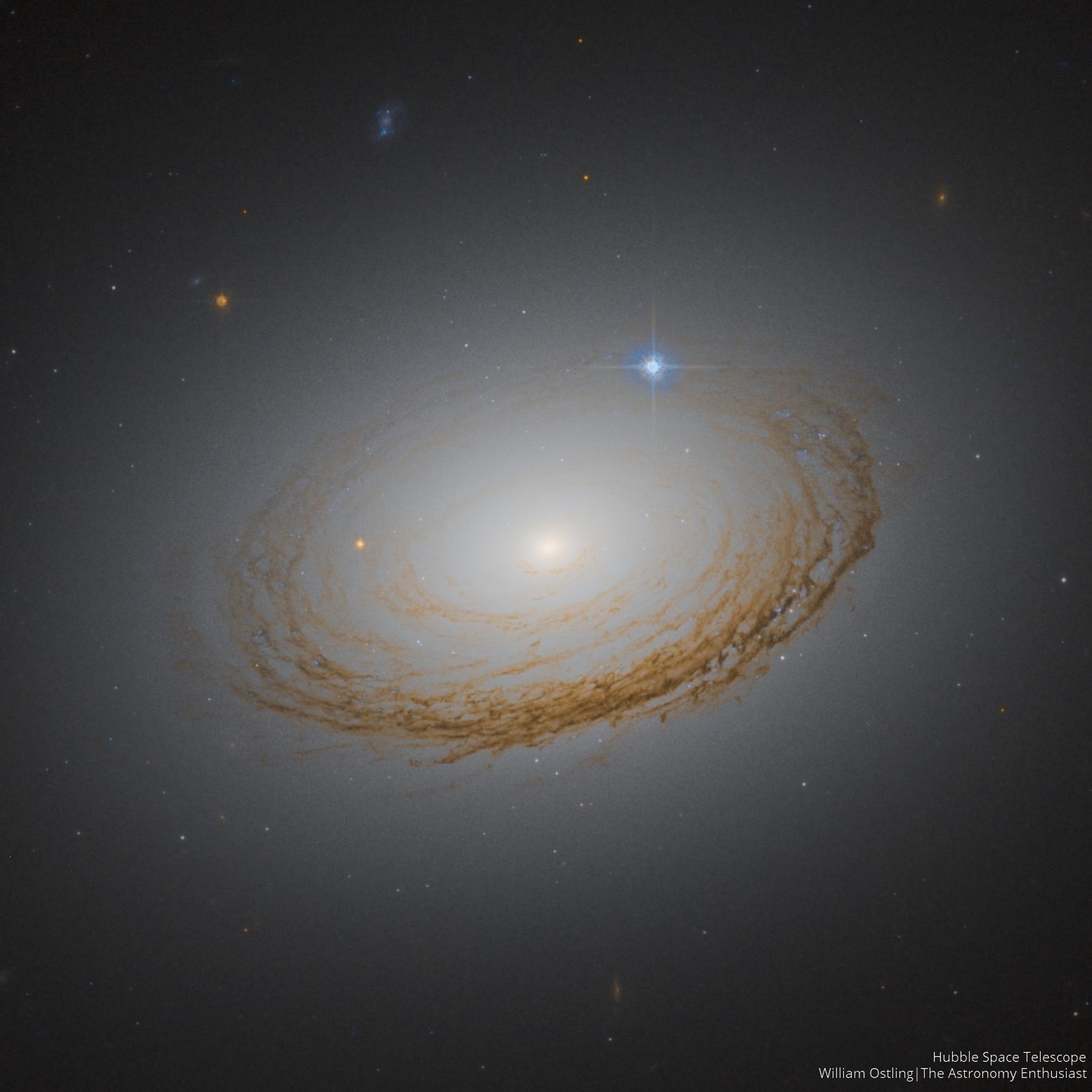Messier 51 from Hubble
The graceful, winding arms of the majestic whirlpool galaxy appear like a grand spiral staircase sweeping through space. They are actually long lanes of stars and gas laced with dust. This sharpest-ever image of the Whirlpool Galaxy illustrates a spiral galaxy’s grand design, from its curving spiral arms, where young stars reside, to its yellowish central core, a home of older stars. The bright pink regions display large bursts of H-alpha, where new stars are formed. I would highly recommend viewing this image on gigapan, where you […]
Read more